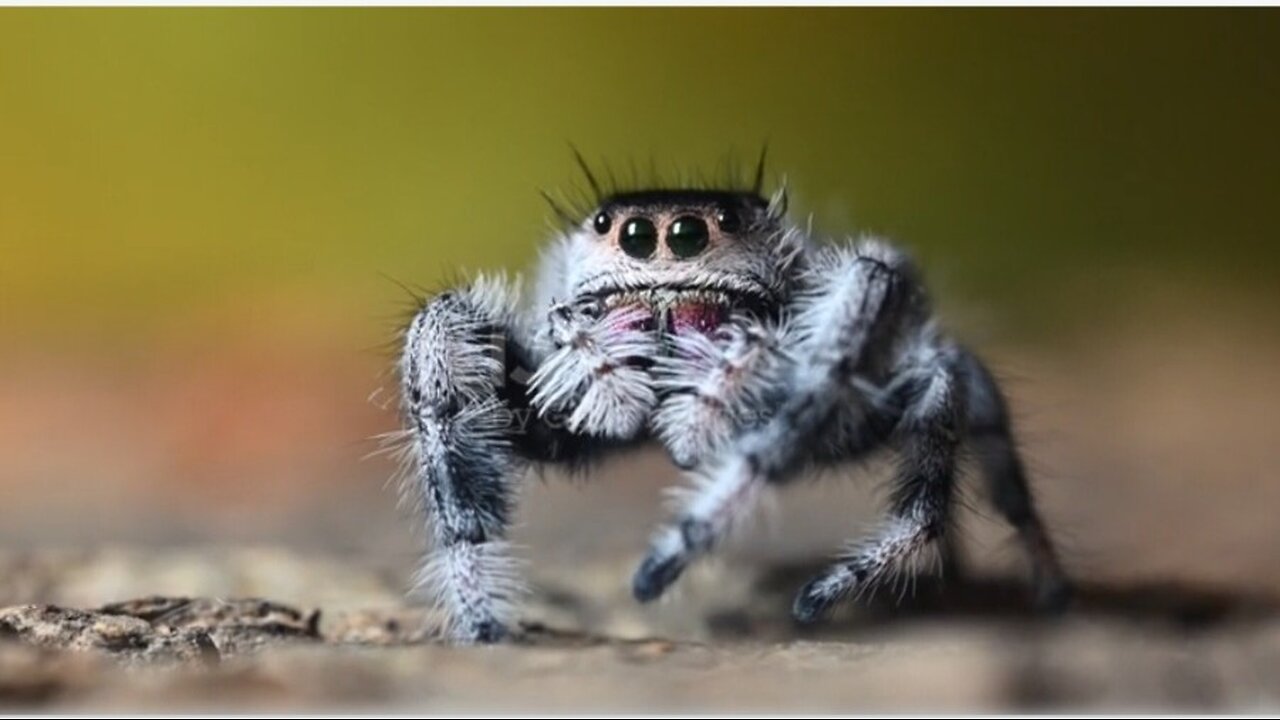Premium Only Content

"Spiders: Nature's Master Weavers and Fearless Predators"
Spiders are arachnids, a class of joint-legged invertebrates that also includes scorpions, ticks, and mites. There are over 48,000 known species of spiders, and they are found in almost every habitat on Earth, from rainforests to deserts, except for the coldest regions like Antarctica. Spiders are known for their ability to spin silk, which they use for various purposes such as building webs, trapping prey, and protecting their eggs.
Anatomy and Characteristics:
Body Structure: Spiders have two main body parts: the cephalothorax (a fused head and thorax) and the abdomen. They have eight legs, which is a key feature that distinguishes them from insects, which have six legs.
Eyes: Most spiders have eight eyes, though the number can vary, and their vision quality depends on the species. For example, jumping spiders have excellent vision, while some cave-dwelling spiders are nearly blind.
Fangs and Venom: Spiders are equipped with chelicerae (mouthparts) that end in fangs, through which they inject venom into their prey. While most spiders' venom is harmless to humans, some species, like the black widow and brown recluse, can deliver venom that causes significant harm.
Silk and Webs:
Spiders produce silk from specialized structures called spinnerets located at the rear of their abdomen. Silk is a versatile material, used for:
Webs: Many spiders build intricate webs to catch prey. There are different types of webs, including orb webs, funnel webs, and cobwebs, each constructed for different environments and purposes.
Hunting: Not all spiders use webs. Some, like the wolf spider, hunt actively by chasing down their prey.
Egg Sacs: Spiders also use silk to create protective sacs for their eggs.
Diet and Hunting:
Spiders are carnivorous and primarily feed on insects, though larger species have been known to consume small birds or reptiles. They are highly effective hunters, either by catching prey in webs, ambushing, or chasing it down. Spiders inject digestive enzymes into their prey, liquefying it so they can suck up the nutrients.
Reproduction:
Spiders have complex mating rituals that often involve elaborate courtship displays to prevent the male from being mistaken for prey by the female. After mating, the female lays eggs, which she may encase in silk and guard until they hatch.
Lifespan and Behavior:
The lifespan of a spider can range from a few months to several years, depending on the species. Some spiders live solitary lives, while others, like the social spiders, form colonies and exhibit cooperative behaviors such as group web-building and shared prey capture.
Common Species:
Orb-weaving Spiders (Araneidae): Known for their beautiful, circular webs, orb-weavers are one of the most common types of spiders.
Jumping Spiders (Salticidae): These spiders are known for their excellent vision and agile jumping abilities. They actively hunt prey rather than relying on webs.
Wolf Spiders (Lycosidae): These fast-moving, ground-dwelling spiders chase down their prey.
Tarantulas (Theraphosidae): Large, hairy spiders, tarantulas are often feared but are generally harmless to humans. They rely on ambush tactics to catch prey.
Spider Venom and Its Effects on Humans:
Most spider species pose little to no threat to humans, as their venom is either too weak to cause harm or their fangs are too small to penetrate human skin. However, a few species can deliver medically significant bites:
Black Widow (Latrodectus): Found in various parts of the world, the bite of a black widow spider can cause muscle pain, cramps, and, in severe cases, difficulty breathing.
Brown Recluse (Loxosceles): This spider’s bite can lead to necrosis (tissue death) in the area around the bite. Symptoms can include fever, chills, and nausea.
Ecological Role:
Spiders play a crucial role in ecosystems by controlling insect populations. They are natural pest controllers, keeping insect numbers in check, which can help reduce the spread of diseases carried by insects and protect crops from insect pests.
Misconceptions:
Spiders are often feared, but they are generally not aggressive toward humans. They bite in self-defense when provoked, but most bites are mild and heal without complications. Spiders are important components of biodiversity and are beneficial to humans in many ways.
In summary, spiders are fascinating creatures with diverse behaviors, hunting strategies, and ecological roles. They are integral to maintaining the balance of ecosystems and are less dangerous to humans than commonly believed.
-
 LIVE
LIVE
Glenn Greenwald
5 hours agoGlenn Answers Your Questions on an Un-American Candidate in TX, Escalating War with Venezuela, Trump's Loyalty to Miriam Adelson, and More | SYSTEM UPDATE #554
4,017 watching -
 3:49
3:49
Gamazda
4 hours ago $0.11 earnedABBA - Dancing Queen (Piano)
2525 -
 1:03:20
1:03:20
BonginoReport
3 hours agoCNN’s Colorblindness Strikes Again! - Nightly Scroll w/ Hayley Caronia (Ep.191)
86K28 -
 1:26:55
1:26:55
The Daily Signal
2 hours ago🚨BOMBSHELL: Minnesota Somali Fraud Scandal Gets WORSE, $8 Billion Lost, Gas & Oil Prices Plummet
3066 -
 17:44
17:44
tactical_rifleman
8 hours ago $0.45 earnedMilitary's New Belt-Fed Machine Gun | MCR | Tactical Rifleman
1595 -
 LIVE
LIVE
LFA TV
21 hours agoLIVE & BREAKING NEWS! | FRIDAY 12/05/25
572 watching -
 LIVE
LIVE
DBoss_Firearms
1 hour agoD'Boss Firearms is LIVE! Help me vote for the Gundies!
108 watching -
 3:14:14
3:14:14
Nerdrotic
7 hours ago $15.54 earnedHollywood PANICS! Netflix WINS Warner Bros | RIP Star Trek - Friday Night Tights 383
122K11 -
 1:33:57
1:33:57
Russell Brand
6 hours agoThe Venezuela Flashpoint: How Fast Could This Spiral? - SF659
147K29 -
 1:26:58
1:26:58
vivafrei
6 hours agoJan. 6 Suspect ADMITS to Planting Bombs, Claims to be Trump SUPPORTER? The Blaze RETRACTS? & MORE!
61.2K106